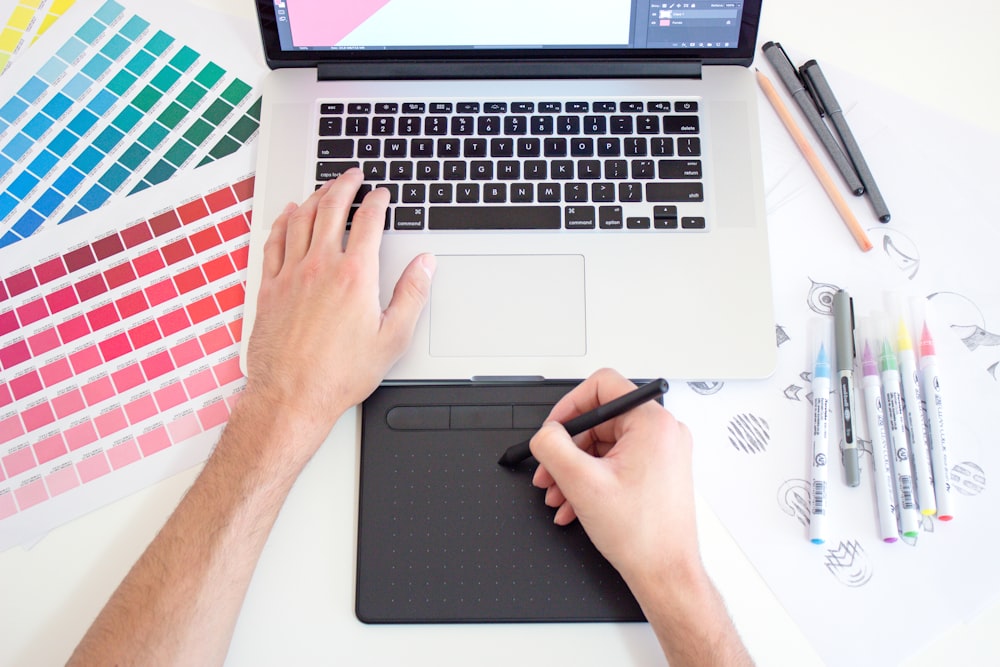Exploring the Fundamentals of Graphic Design
Graphic design is a dynamic field that blends creativity, technology, and visual communication. Understanding the essentials of graphic design, including tools, techniques, and creativity, is crucial for aspiring designers and professionals alike.
Essential Tools for Graphic Designers
Graphic designers rely on a range of tools to bring their ideas to life. Design software such as Adobe Photoshop, Illustrator, and InDesign are industry standards, offering powerful features for image editing, vector graphics, and layout design. Understanding how to use these tools efficiently and creatively is essential for effective graphic design.
Techniques for Effective Design Communication
Effective graphic design goes beyond aesthetics; it communicates ideas, messages, and emotions to the audience. Techniques such as typography, color theory, layout design, and visual hierarchy play a critical role in conveying information effectively. Designers use these techniques to create visually appealing and functional designs that engage and resonate with viewers.
Creativity as the Heart of Graphic Design
Creativity is at the heart of graphic design, driving innovation, problem-solving, and artistic expression. Creative thinking allows designers to approach projects with fresh perspectives, explore new ideas, and push the boundaries of design conventions. Whether designing logos, branding materials, posters, or digital assets, creativity fuels the design process and distinguishes outstanding work.
Understanding Design Principles and Elements
Graphic designers work with a set of fundamental principles and elements to create cohesive and visually pleasing designs. Principles such as balance, contrast, alignment, proximity, and repetition guide designers in creating harmonious compositions. Elements like lines, shapes, colors, textures, and typography are the building blocks of design, used strategically to convey meaning and evoke emotions.
The Role of Technology in Graphic Design
Advancements in technology have revolutionized the field of graphic design, providing designers with powerful tools and platforms to unleash their creativity. Digital design software, online collaboration platforms, and cloud-based storage have streamlined workflows and expanded design possibilities. Mobile apps and responsive design techniques have also transformed the way designers approach creating designs for various devices and screen sizes.
Collaboration and Communication in Design Projects
Graphic design often involves collaboration with clients, colleagues, and stakeholders. Effective communication skills are essential for understanding client needs, presenting design concepts, gathering feedback, and making revisions. Collaboration tools, project management software, and clear communication channels facilitate smooth workflows and successful design projects.
Practical Tips for Aspiring Graphic Designers
For aspiring graphic designers, gaining practical experience and honing skills is key to success in the field. Engaging in internships, freelance projects, or design challenges provides valuable hands-on experience and opportunities to build a portfolio. Continuous learning, staying updated with industry trends, seeking feedback, and networking with fellow designers contribute to professional growth and development.
Balancing Creativity and Functionality in Design
Graphic designers often navigate the delicate balance between creative expression and meeting client objectives. While creativity drives innovative solutions and unique design concepts, designers must also consider usability, accessibility, and brand consistency. Balancing aesthetics with functionality ensures that designs not only look visually appealing but also serve their intended purpose effectively.
The Ever-Evolving Landscape of Graphic Design
As technology, trends, and consumer preferences evolve, so does the field of graphic design. Designers must adapt to new tools, techniques, and design trends while maintaining a strong foundation in design principles and creativity. Embracing lifelong learning, staying curious, and embracing change are essential for thriving in the ever-evolving landscape of graphic design. Read more about Graphic design




